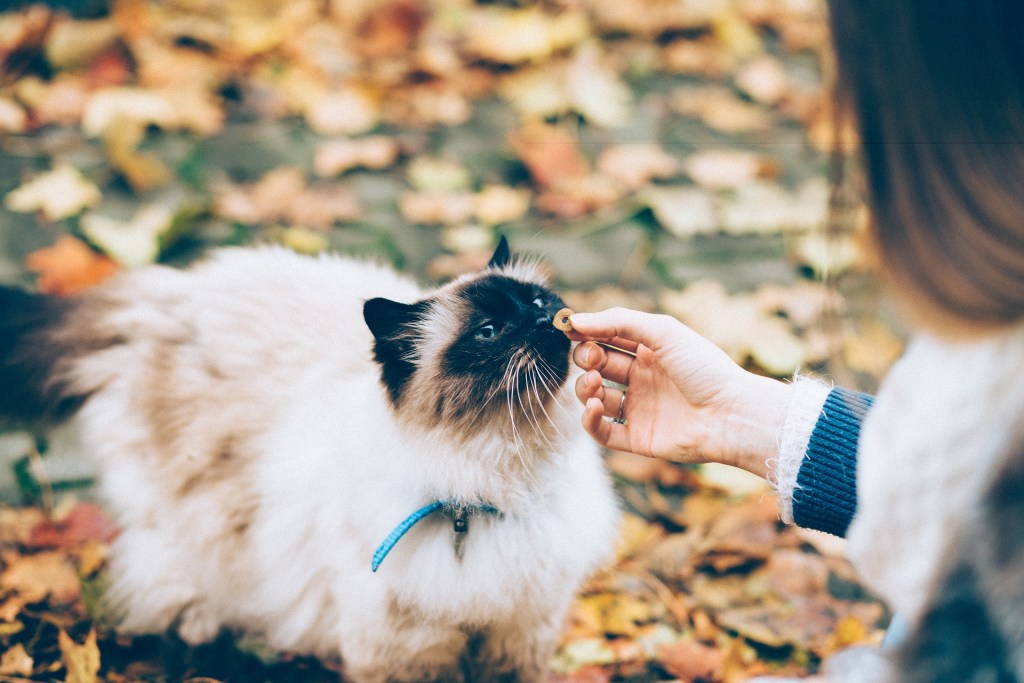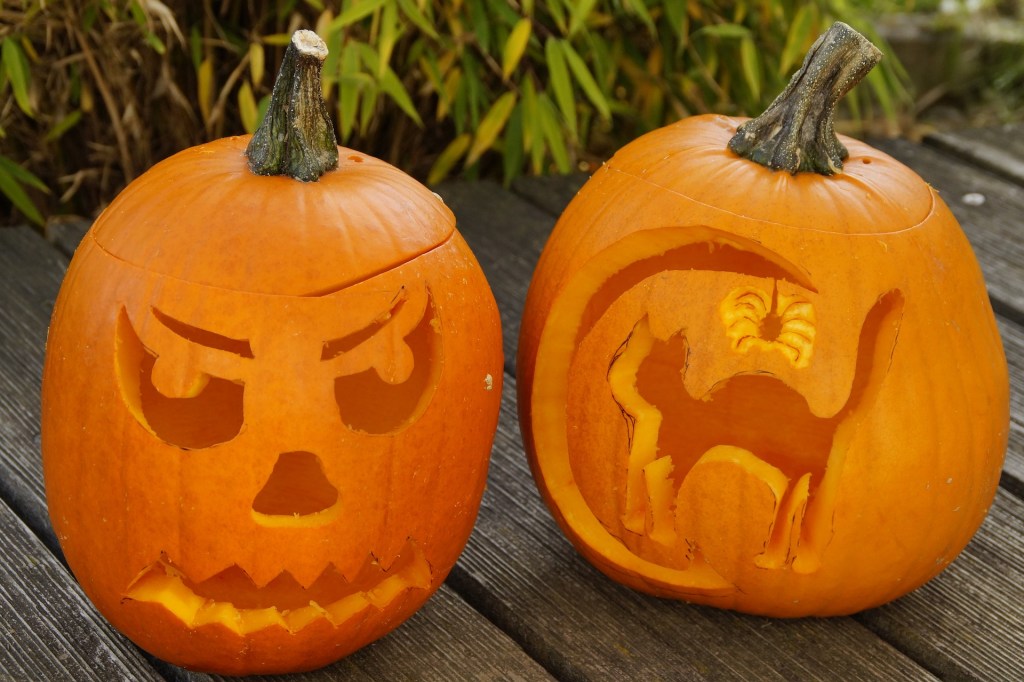Fall is such a wonderful season, full of cooler weather, beautiful foliage, and fun activities like pumpkin picking and trick-or-treating. While your cat might not be able to accompany you on those outdoor activities, there are still plenty of fun things to do with your cat this fall.
Both you and your cat can enjoy these activities safely, and they can all be done entirely inside, perfect for those indoor-only cats. If you’re getting into the fall spirit and want to spend some special time with your cat, too, consider adding these feline-friendly activities to your to-do list this autumn.

Have a fall-themed photoshoot
Plan to get some fall-themed photos of your cat and you together. You can hire a professional pet photographer to come to your home, and many photographers will bring fall-themed props if you plan for the shoot. A pet photographer will have the equipment and skill needed to capture great photos of your cat, even indoors.
If you can’t afford a professional, you can still have a fun photoshoot with the help of a family member or friend. Gather some props, like pumpkins and fall leaves, and then set up a photoshoot area in your home. Pay attention to your background — look for a spot that’s clean and minimally distracting. Set up so that the light is in front of your subject — don’t set up right in front of a window — and consider adding lights behind the photographer to help you get the perfect shot. Give your cat some treats or toys, and then start taking plenty of photos.
Watch a scary movie
Fall, particularly as we creep up on Halloween, is the perfect time to watch scary movies. Your cat can join you, too. Round up some of your favorite scary movies, grab a cozy blanket, and head to the couch. Chances are, your cat will snooze on your lap through most of the movie, so just try not to jump too badly!
Not a horror movie fan? Then wait for a rainy fall day when it’s too chilly to go outside and watch a more relaxing flick with your cat.

Carve a pumpkin
Pumpkin carving is another fall tradition you and your cat can enjoy. Sure, your cat might not help with the carving, but he’ll probably be pleased to inspect what you’re doing and check out the pumpkin innards.
Consider using your cat as inspiration for your pumpkin. You could carve a cat face into the pumpkin, or if you’re feeling ambitious, try to carve out an entire cat body. A stencil kit will help.
Enjoy a taste of fall
One of the best parts of fall is all the fabulous flavors and foods that come into season. Now is the perfect time to enjoy some of those great tastes with your cat.
If you make a food that’s pumpkin flavored, like pumpkin pie, pumpkin bread, or pumpkin muffins, you’ll probably be working with canned pumpkin. Canned pumpkin is a delicious food for cats, and it’s healthy for them, too. Canned pumpkin is loaded with fiber, which can help relieve digestive issues like constipation or diarrhea. It’s also highly nutritious for cats.
You and your cat can enjoy pumpkin flavor together. Just be sure to give your cat only a bit of canned pumpkin, and never pumpkin pie filling, which has additional spices and ingredients. If you do introduce pumpkin to your cat, give him just a little bit each day. Give him only the pumpkin out of the can, never something that you’ve added butter, sugar, or spices, too, since this could upset his stomach.
Fall is the perfect season to enjoy some quality time with your cat. You’ll need to do a little planning for each of these activities, but they’re all affordable options that can keep you and your cat entertained for a few hours. You don’t even have to go outside, so they’re an ideal choice for cats who are indoor only. Spending special time with your cat is a great way to bond with him even more, and you’ll make some valuable memories, too. Who knows — maybe you’ll find your new favorite fall tradition in one of these fun activities!


